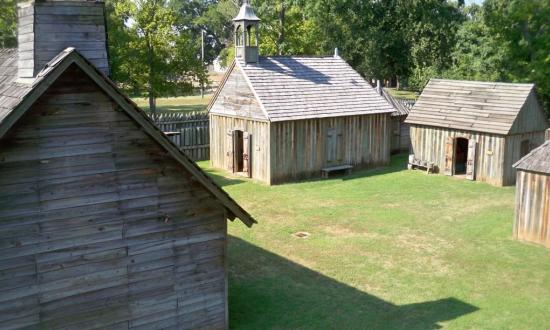Welcome to Fort Saint Jean Baptiste, a fascinating historical landmark nestled in Natchitoches, Louisiana. This site is a full-scale replica of a French fort originally constructed in 1716. The fort stands as a testament to the rich colonial history of the region and the cultural exchanges that took place here.
The story begins with Louis Juchereau de St. Denis, a French-Canadian trader on a mission to establish trading ties with Mexico. In 1714, St. Denis found himself halted by a massive logjam on the Red River. Here, he constructed two huts that laid the foundation for Fort St. Jean Baptiste and the town of Natchitoches, now the oldest permanent settlement in the Louisiana Purchase territory. By 1722, St. Denis became the commandant of the fort, overseeing its development until his death in 1744.
Throughout its history, the fort witnessed several notable events. In 1731, the Natchez Indians attacked, revealing the fort’s vulnerabilities. This prompted French officials to send engineer François Broutin to fortify the structure. Despite a Spanish protest claiming the fort’s location as their territory, St. Denis diplomatically ignored them, allowing the fort to continue as a French outpost until 1762.
Under Spanish control following France’s defeat in the French and Indian War, the fort’s strategic importance waned. By the time the United States acquired the territory in 1803, the fort was in ruins. However, the legacy of Fort Saint Jean Baptiste as a military and trading hub continued to influence the region’s cultural and economic landscape.
Not only was the fort a center of trade and defense, but it also played a key role in the cultural exchange among French settlers, Native American tribes, and later, Spanish authorities. This melting pot of cultures contributed to the development of a unique Creole culture in the region.
Today, visitors can explore the reconstructed fort, which stands a few hundred yards from its original site. It offers a glimpse into the 18th-century life of soldiers, traders, and settlers who called this place home.






